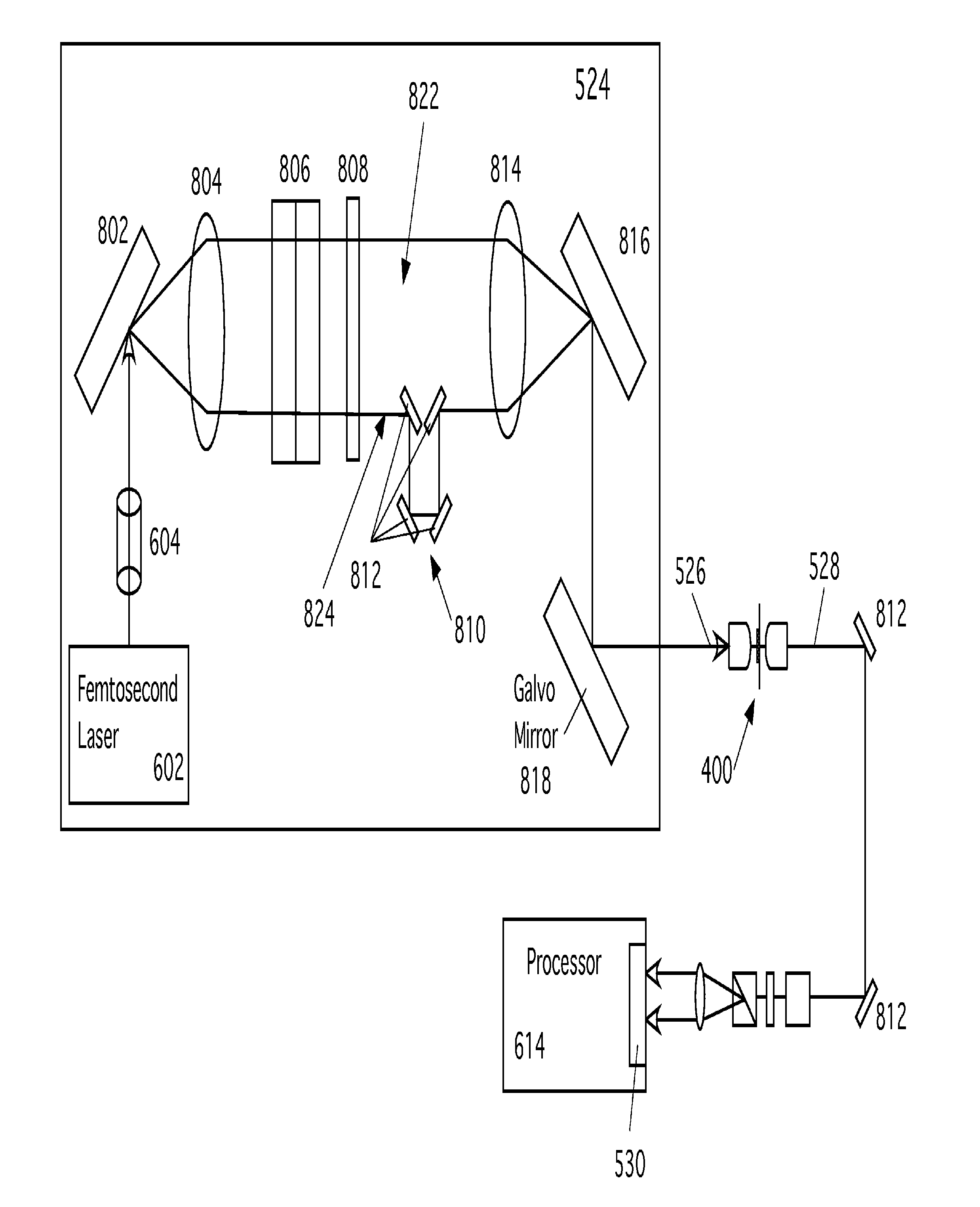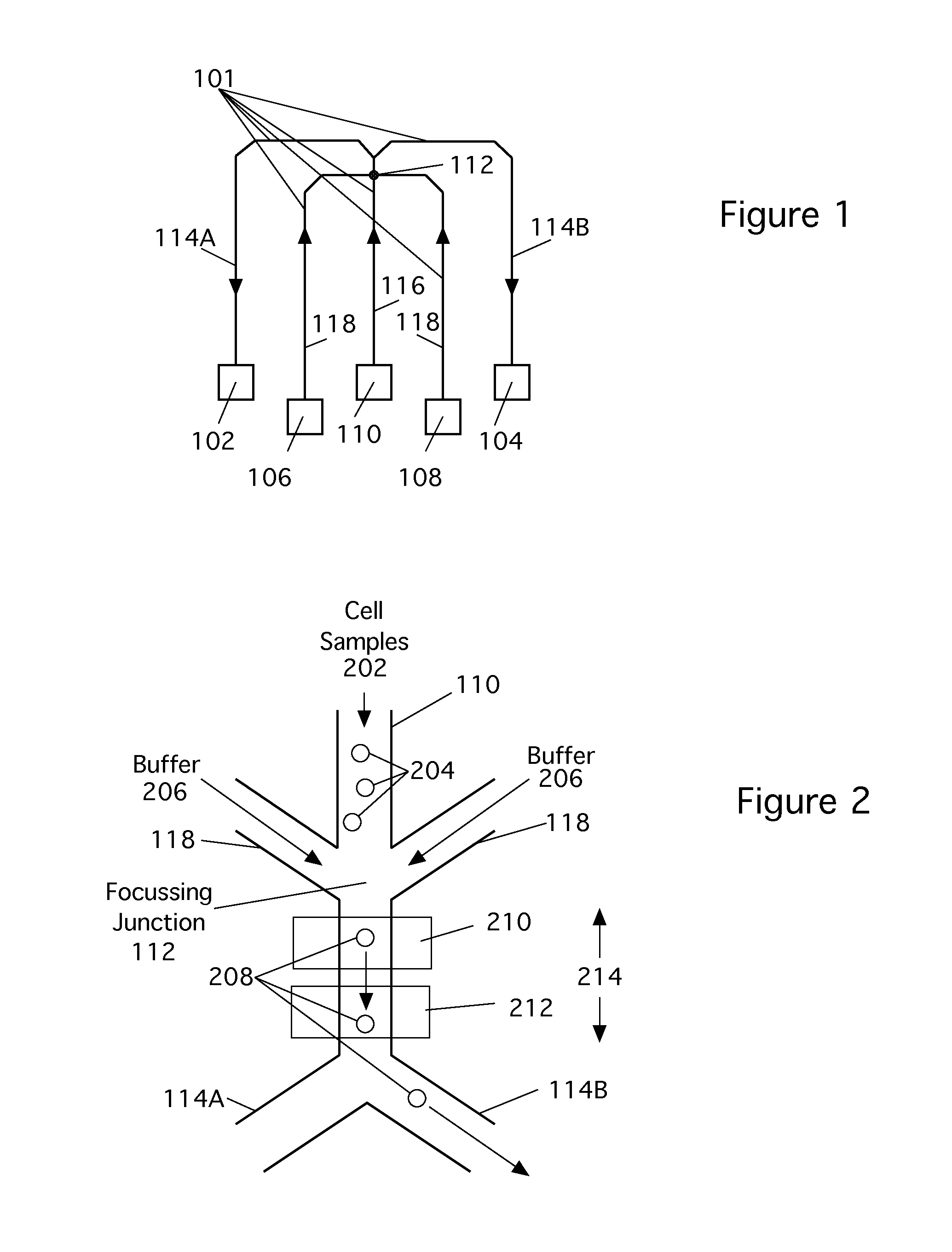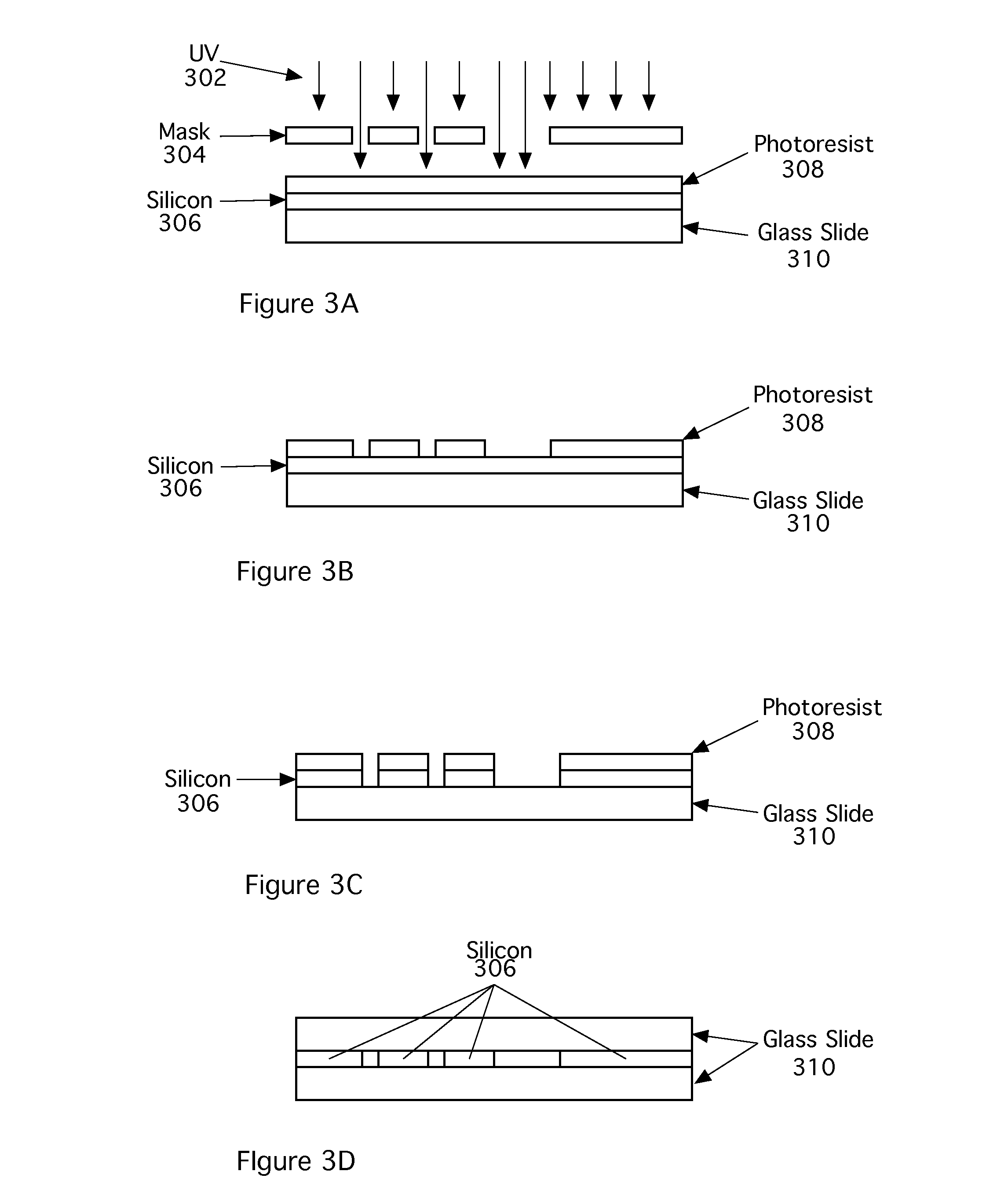Microfluidic cell sorter utilizing broadband coherent Anti-stokes raman scattering
a microfluidic cell and anti-stokes raman technology, applied in specific use bioreactors/fermenters, biomass after-treatment, instruments, etc., can solve the problems of limited chemical analysis capabilities, size and non-portability, and the need for a sterile lab environmen
- Summary
- Abstract
- Description
- Claims
- Application Information
AI Technical Summary
Benefits of technology
Problems solved by technology
Method used
Image
Examples
Embodiment Construction
[0024]The following reference numbers are used in the figures:
101Microfluidic channels102Target output104Waste output106, 108Buffer reservoirs110Sample reservoir112Focusing junction114Output channels116Input channel118Buffer channels202Sample fluid204Sample cells206Buffer fluid208Target cell210Light scattering measurement location212Broadband CARS measurement location214Observation region302UV light304Mask306Silicon308Photoresist310Glass slide500Microfluidic flow cytometer502Time at focusing junction504Time at light scatter detect506CARS acquisition time510Time of cell sorting512Light source514Light at Measurement point 210516Light scattered from cell520Photodetector524CARS input pulse source526CARS input pulse528Scattered CARS radiation530Light detector532Line detectors536Back pressure602Laser604Pulse spreader606Pulse shaper612Filter614Processor616Sort control signal618Display / store data element802, 816Optical Gratings804, 814Lenses806Spatial Light Modulator (SLM)808Spatial filter8...
PUM
 Login to View More
Login to View More Abstract
Description
Claims
Application Information
 Login to View More
Login to View More - R&D
- Intellectual Property
- Life Sciences
- Materials
- Tech Scout
- Unparalleled Data Quality
- Higher Quality Content
- 60% Fewer Hallucinations
Browse by: Latest US Patents, China's latest patents, Technical Efficacy Thesaurus, Application Domain, Technology Topic, Popular Technical Reports.
© 2025 PatSnap. All rights reserved.Legal|Privacy policy|Modern Slavery Act Transparency Statement|Sitemap|About US| Contact US: help@patsnap.com



